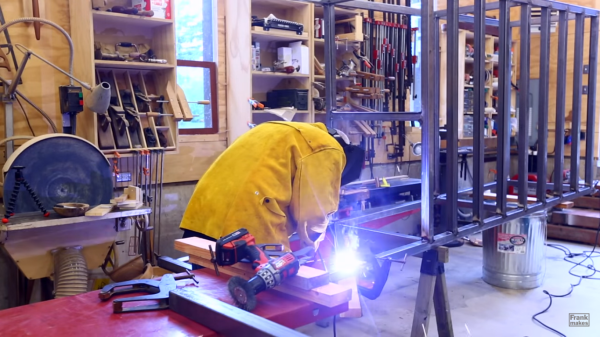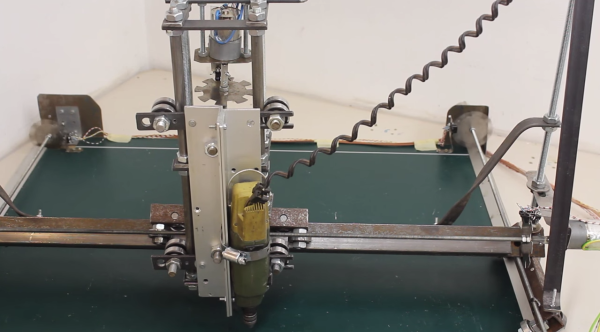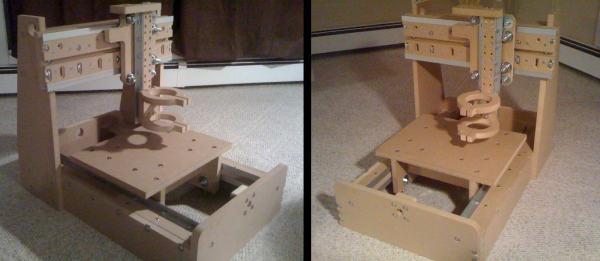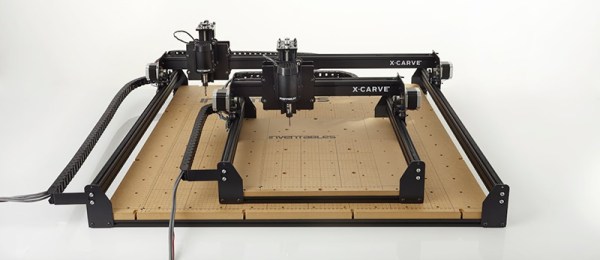[HomoFaciens] is back at the bench again and working on improvements to his cheap and simple CNC machine.
The video below will no doubt remind you about previous versions of [HomoFaciens]’ CNC builds, which we’ve covered in depth. With an eye to spending as little as possible on his builds, most parts are recovered from e-waste, with a fair amount of Dumpster diving thrown in. For this upgrade, the salvaged brushed DC motors with their signature gap-toothed encoder disks are replaced with genuine bipolar steppers. The primary intention of his build is to learn (and teach) as much as possible, so he spends a good amount of time going over steppers and their control – how to determine phase wiring, how to wire up the not-salvaged-but-still-cheap drivers, directional control, and half-stepping. The mechanics are decidedly dodgy, but there are clever expedients aplenty – we especially like the oil cup fabricated from a brass tube and a bolt with a hole drilled in it. Everything just works, and the results to expense ratio is hard to beat.
While we appreciate the upgrades here, we’re still keen to see how junky his other trash can CNC can get. And we’re still waiting on the paper clip and cardboard challenge.

















